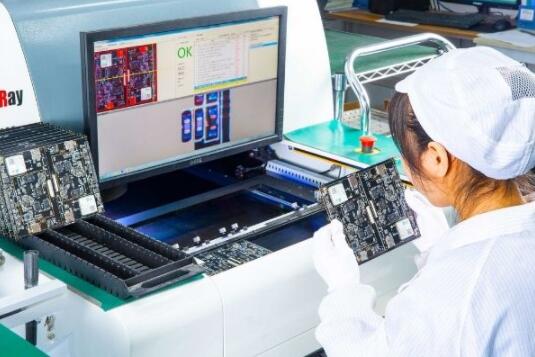The quality advantage of PCBA in the era when the quality of products in the market is king is an important entry ticket to the door of success. Any high-quality product has to undergo continuous grinding and testing until it is perfectly shaped. In the electronic product industry, PCBA testing is the most critical quality control link in the entire manufacturing process, which determines whether the ultimate performance of PCBA manufactured products fully meets the standards.
Types of PCBA Tests
1. ICT (In Circuit Tester) Testing
The SMT technical quality inspector tests circuit on and off, voltage and current values and fluctuation curves, amplitude, noise, etc. High measurement accuracy and clear indication of detected problems are a means of standard testing.
2. FCT (Functional Circuit Test) Test
FCT refers to providing a simulated operating environment (incentive and load) for the test target board, burning the IC program, simulating the function of the entire PCBA board, finding problems in hardware and software, and equipping necessary patch manufacturing tools and test shelves.
3. Fatigue test
The SMT patch manufacturer quality inspector of PCB board manufacturer sampled the PCBA board in the whole production process, and carried out high frequency test of the function. The test maintained a long operation state, observed whether the failure occurred, and needed to synchronously judge the probability of failure in the test, in order to feedback the working performance of the PCBA board in electronic products.
4. Aging Testing
Smt quality inspectors keep PCBA boards and electronic products on power for a long time, keep them working and observe if any failure occurs, so that after aging testing, electronic products can be sold in bulk.
5. Testing in harsh environment
Refers to the process of intensifying experiments to simulate various factors involved in the actual use conditions of the product to aging, exposing the PCBA board to the extreme humidity, temperature, drop, splash, vibration, and obtaining the test results of random samples, so as to infer the reliability of the whole batch of PCBA board products.

Methods of PCBA Testing
1. Manual testing
Direct visual testing confirms component mounting on the PCB through visual and comparison.
2. Automatic Optical Detection (AOI)
Also known as automatic visual testing, it is carried out by a special detector and used before and after reflux to check the polarity of components.
3. Flying Needle Test
Advances in machine speed, accuracy and reliability, coupled with the current requirements for rapid conversion and fixture-free test systems for prototype and low-yield manufacturing, make flypin testing the best choice.
4. Functional testing
There are two types of functional testing: Final Product Test and Hot Mock-up, and testing methods for a specific PCB or unit must be done by a dedicated device.
5. Manufacturing Defect Analysis (MDA)
Advantages: Low upfront cost, high output, easy follow-up diagnosis, fast and complete short circuit and open circuit testing.
Disadvantages: Functional testing is not possible, there is usually no test coverage indication, fixtures must be used, and testing costs are high.
PCBA Testing Equipment
1. ICT Online Tester
ICT is an automatic on-line tester, which has a wide range of applications and simple operation. ICT automatic on-line detecting instrument is mainly for production process control, it can measure resistance, capacitance, inductance, integrated circuit. It is especially effective for detecting open circuit, short circuit, component damage, accurate fault location and convenient maintenance.
2. FCT Function Tester
Simulated operating environments, such as incentives and loads, can be pointed at PCBA boards to obtain various state parameters of the board to detect whether the board's functional parameters meet the design requirements. The items of FCT function test include voltage, current, power, power factor, frequency, duty cycle, brightness and color, character recognition, sound recognition, temperature measurement, pressure measurement, motion control, FLASH and EEPROM burning, etc.
3. Aging Tester
Refers to the process of intensifying experiments to simulate various factors involved in the actual conditions of use for aging products. Long-term power-on tests can be carried out based on PCBA boards of electronic products to simulate customer use and to perform input/output tests to ensure that their performance meets market demand.
